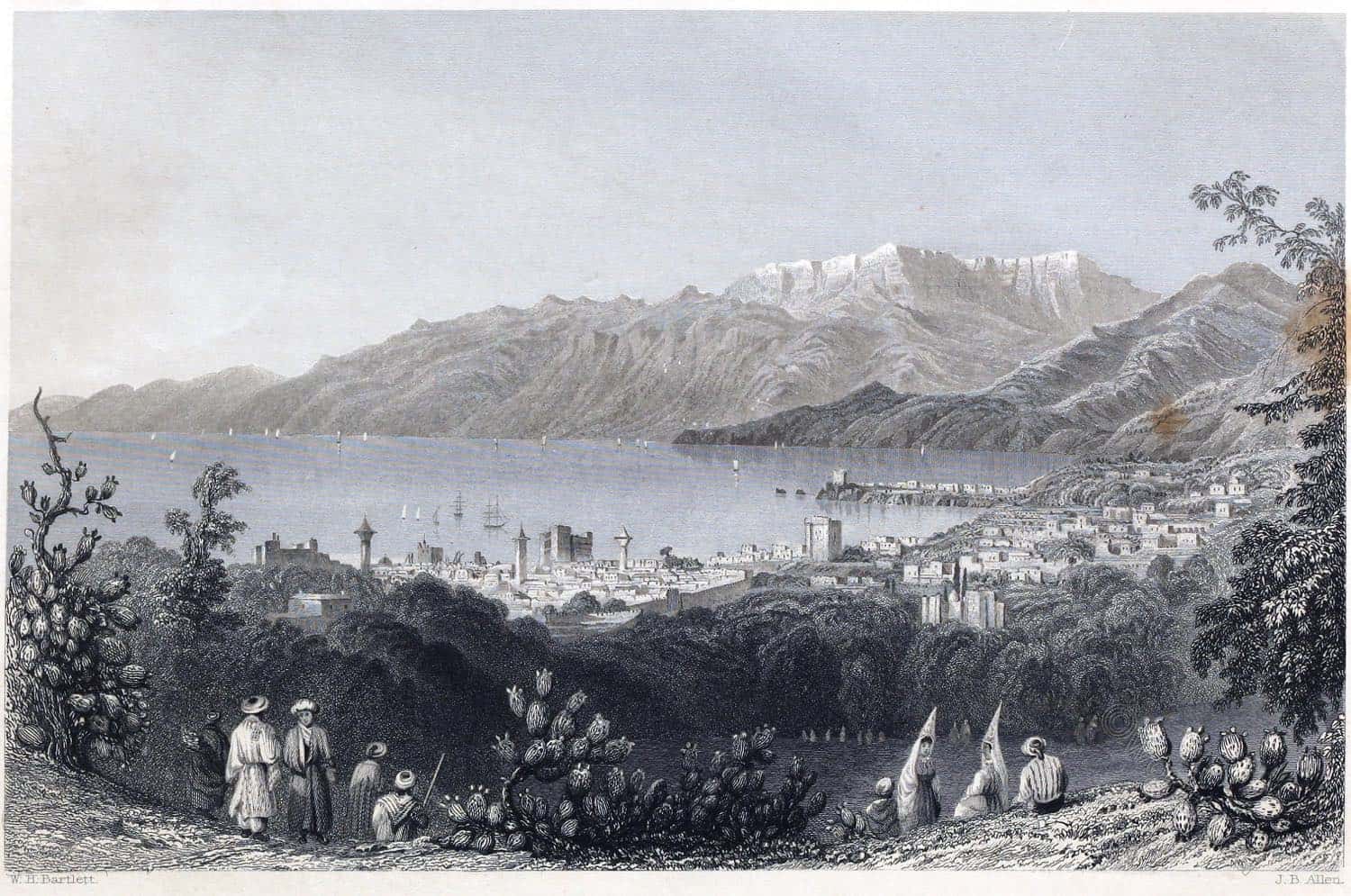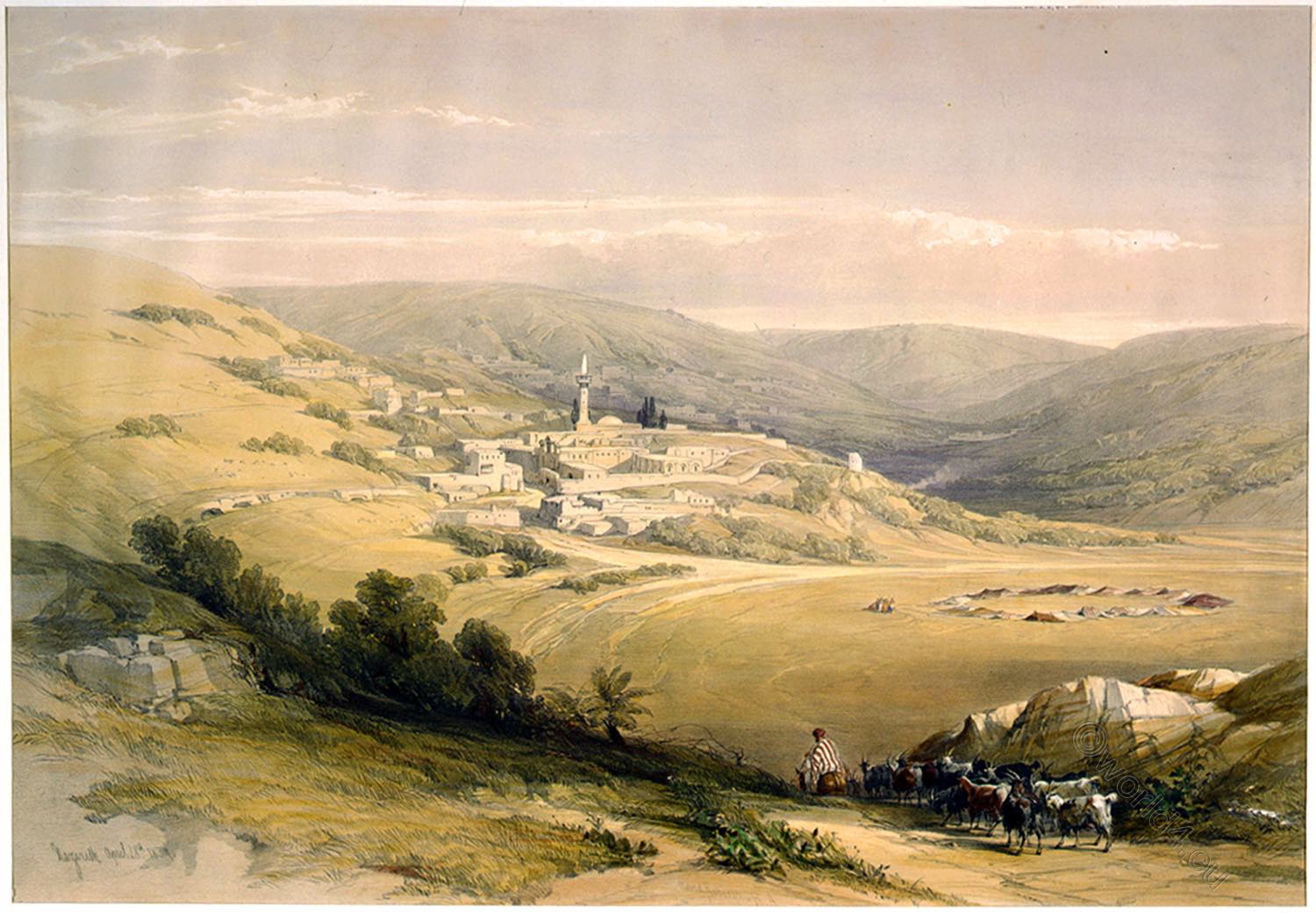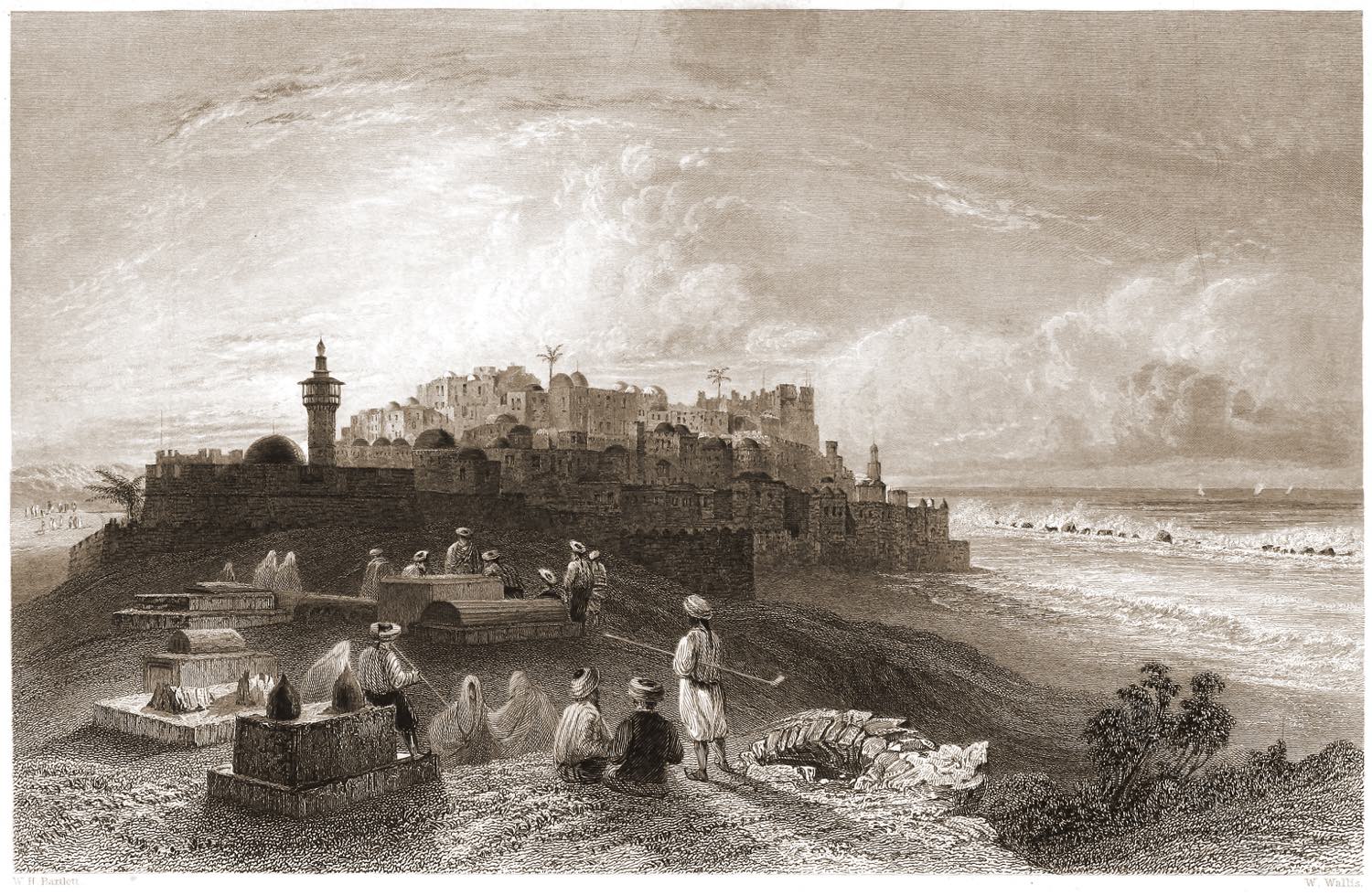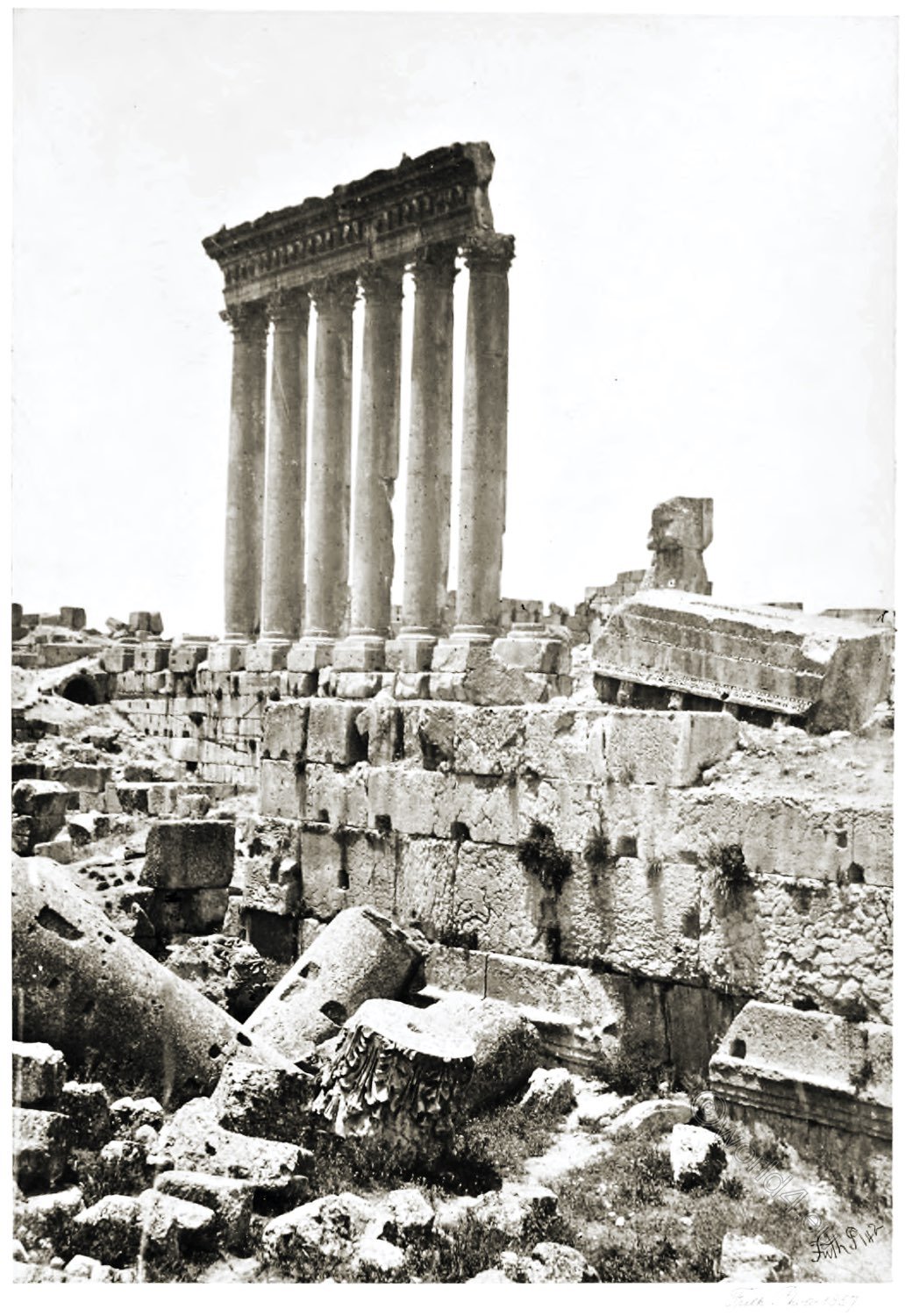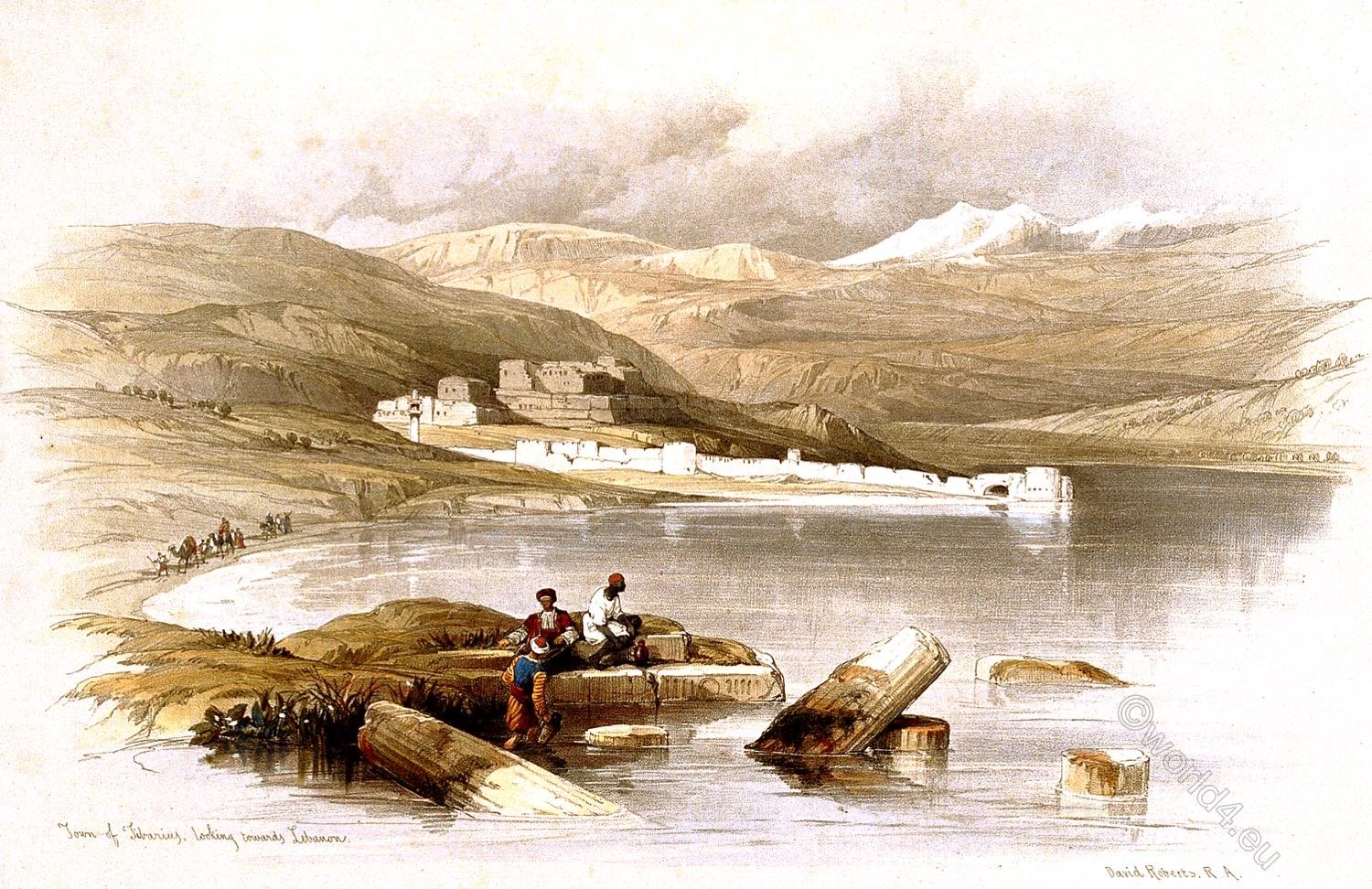
The town of Tiberias viewed from the Roman ruins at the hot springs south of the city. Coloured lithograph by Louis Haghe after David Roberts, 1842.
TOWN OF TIBERIAS, LOOKING TOWARDS LEBANON.
by David Roberts
The Artist conceives the columns in the foreground to mark the site of ancient baths, from the hot springs still issuing round the ruins which lie on the shore of the Lake, about half an hour’s walk south of the City.
The whole way from the Town is marked by traces and remains of the ancient City; several columns of grey granite, twelve or fifteen feet long, lie together about half way to the baths.
An old bathing house remains, and is still used by the common people; but Ibrahim Pasha, in 1838, raised, at the distance of some rods from the site, a handsome edifice for public and private bathing, consisting of a large circular apartment, covered with a dome, and having a marble pavement around a fine circular reservoir, to which steps descend.
The roof is supported by columns. Many doors lead into this apartment. At the period of the Artist’s visit, this bath was crowded with pilgrims, who at this season were returning from Jerusalem. The building contains private apartments for those who can afford to pay for them, which are well and orientally furnished, and some have beautiful marble baths.
Above the old bathing house is a large reservoir,1) into which the water is first received, and allowed to cool before it flows into the bath; this is necessary, for its temperature when it issues from the spring is 144° of Fahrenheit. There are four springs nearly together; the taste of the water is salt and bitter, like hot sea water, and it gives out a strong odor of sulphur.
Those waters are considered highly efficacious in rheumatic affections and debility, and are much resorted to from all parts of Syria. They are spoken of by Pliny 2), and by Josephus, 3) and they were called Ammaus (Warm Baths).
In the Talmud, the springs are mentioned as the ancient Hammath. The view of Tiberias and the Lake from this spot, backed as it is by the snowy summits of Lebanon, is strikingly picturesque; but it wants wood, though the vegetation is rank in grass, brambles, and low shrubs.
1) Roberts’s Journal. 2) Hist, Nat v. 15. 3) Joseph. Antiq. xviii. 2.
Source: The Holy Land, Syria, Idumea, Arabia, Egypt, & Nubia, by David Roberts, George Croly, William Brockedon. London: Lithographed, printed and published by Day & Son, lithographers to the Queen. Cate Street, Lincoln’s Inn Fields, 1855.
Continuing
Discover more from World4 Costume Culture History
Subscribe to get the latest posts sent to your email.


